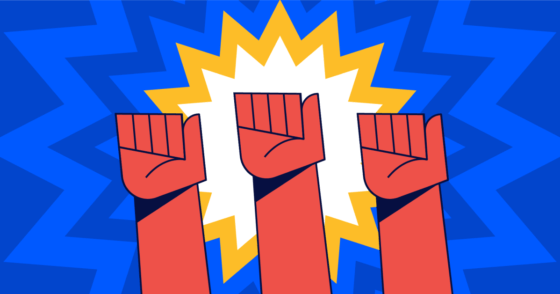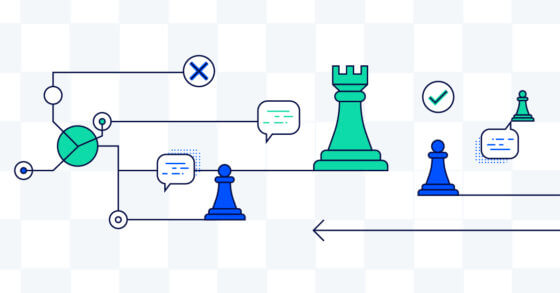Nir Eyal on becoming indistractable: How to get the best from technology without letting it get the best of you

Last week, we co-hosted a Product Management Speaking Series event at productboard’s San Francisco office. Nir Eyal, technology thought leader and author of the bestselling book Hooked: How to Build Habit-Forming Products, joined us to give a talk on psychology-backed strategies for overcoming distraction in the digital age. The topic is the premise of his new book, Indistractable: How to Control Your Attention and Choose Your Life.
Read on for a recap of Eyal’s tips for managing valuable time and attention in an era where everything seems designed to take it away.
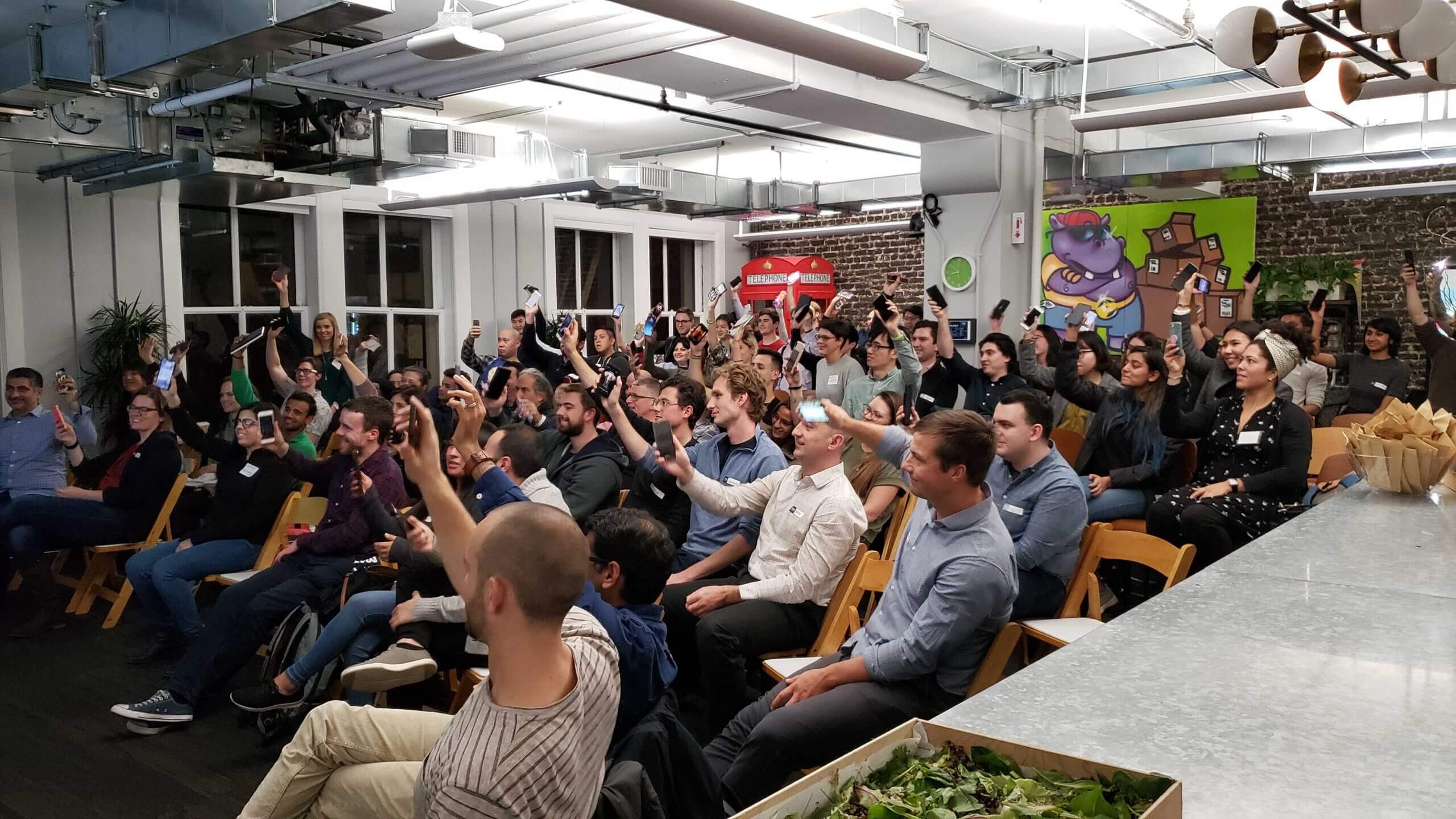
The story behind Indistractable
Eyal wrote Hooked in 2013 to help companies build products that engage users and bring them back repeatedly. In the past five years, companies like The New York Times and FitBit have used his Hook Model to help users build healthy habits via digital products.
However, there is a downside to products that users can’t put down. Distraction.
Gaming, social media, and tech companies create products that take up so much of our attention that we miss real-life moments with friends and family. Not to mention the ever-present problem of procrastination. With the wealth of digital products at our fingertips today, maintaining focus in work and school has never been more challenging.
To take back control of our lives, Eyal suggests that we first get to the bottom of why we become distracted. Once we have this understanding, we can then employ psychology-backed tactics that will help us overcome the urge of distraction when it hits.
Understanding why we get distracted in the first place
As much as we like to blame our lack of focus and short attention spans on the rise of Facebook, Instagram, and iPhones, these problems actually precede modern technology. Turns out, humans have always had trouble focusing on the “right” things.
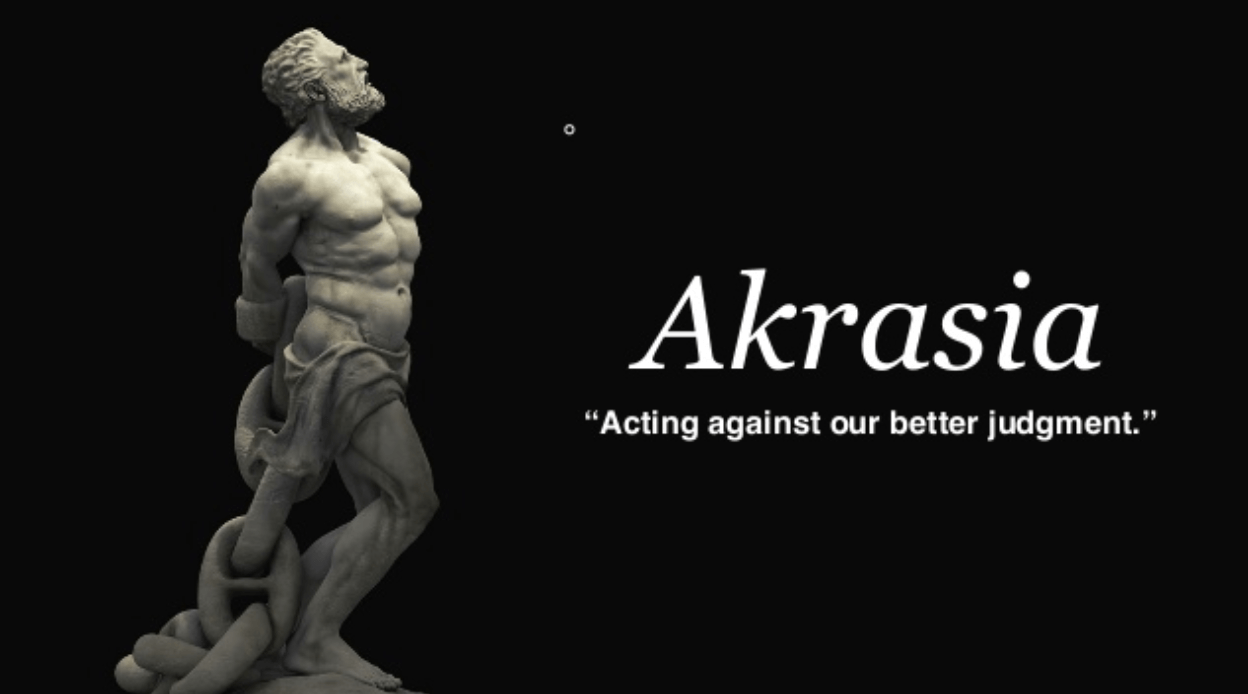
Akrasia is defined as a lack of self-control or the state of acting against one’s better judgment. Ponderings on akrasia can be traced back as far as Plato’s time, where he asked the following:
“How it is possible that, if one judges action A to be the best course of action, one would do anything other than A?”
Why do we choose to scroll endlessly on Instagram rather than working on that project that needs to be done by tomorrow? To answer questions like these, Eyal believes that we need to understand the nature of our motivations. Why do we do everything or anything at all?
According to psychological research, our choices (the products we use, the actions we take, etc.) mostly revolve around the avoidance of pain. Everything we do is about the desire to escape discomfort, even the pursuit of pleasurable sensations.
So, if we seek to tackle our issue of distraction, we first have to know exactly what kind of discomfort we are trying to escape.
If we follow this line of thinking, time and attention management is actually pain management. This is the beginning of dissecting why we get distracted and then getting it under control.
Distraction vs. traction
To truly understand distraction, we must identify its opposite. And perhaps counterintuitively, the opposite of distraction is not focus, but traction.
The opposite of distraction is not focus, but traction.
Traction is any action that moves us towards what we want to achieve — things that we do with intent. A distraction is anything that pulls us away from what we plan to do with intent.
Distractions make us prioritize the urgent at the expense of the important. Checking your email first thing in the morning, scrolling through your team’s Slack channel, and answering the phone are all distractions if they are not intentionally scheduled.
If you plan to do something and do it with intent, you can actually turn distractions into active traction and enjoy them without guilt.
Internal and external triggers
Internal and external triggers are what moves us toward either traction or distraction.
External triggers are sensory stimuli, like a phone ringing or an ad online telling us to “click here now!” Distractions from technology fall under this bucket.
Internal triggers, on the other hand, manifest themselves in our minds. Internal triggers can be emotions like boredom (let’s check Instagram) or loneliness (let’s chat with a friend on Facebook).
Research tells us that most distractions actually come from internal triggers, which explains why focusing on the “wrong” thing (when we have knowledge of the “right”) has been a problem long before the modern technology boom.
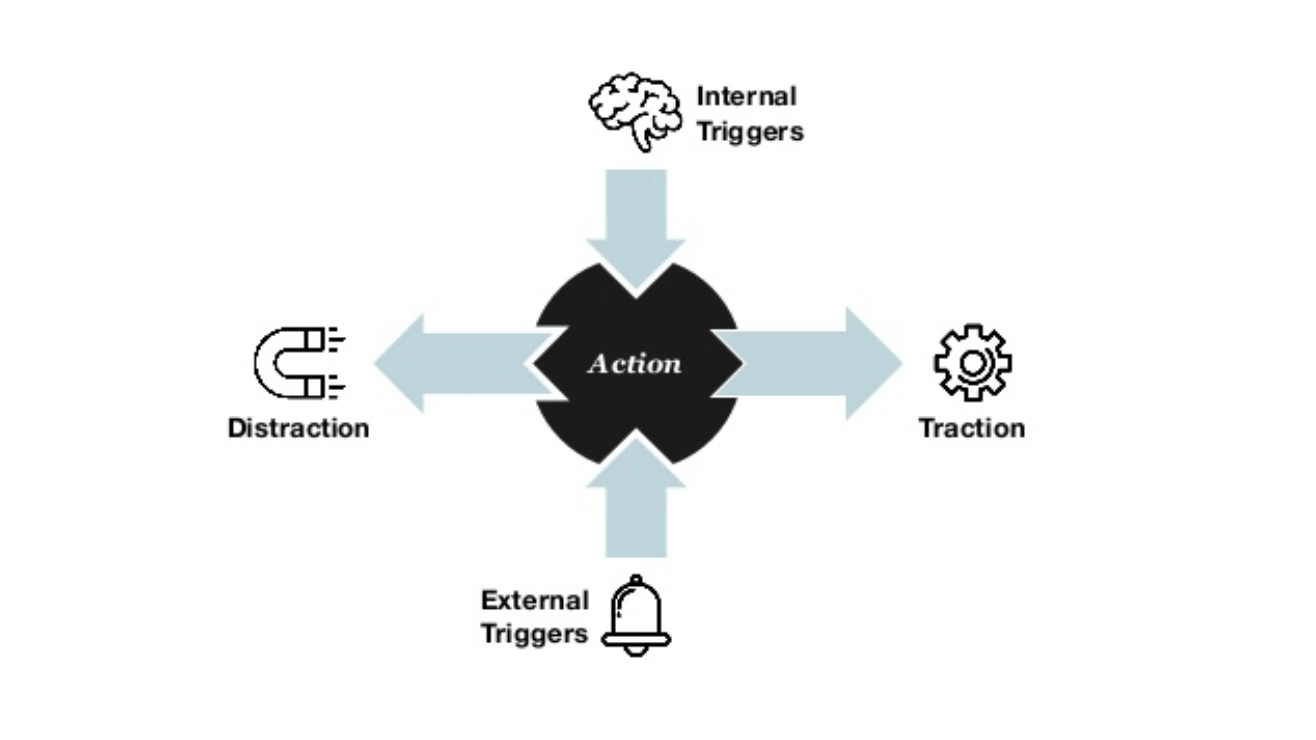
How you can become indistractable
Eyal shared a few techniques to help us manage our discomfort and the associated distraction that comes along with it.
Identify the psychological discomfort that leads to distraction
The first step to understanding complex emotional triggers is to simply write down what you are experiencing. This will help you identify the psychological discomfort that causes you to become distracted.
Once you figure it out, it is just as important to be gentle with yourself. A lot of people shame themselves for not being able to stay focused (Eyal calls these folk “shamers”). Others blame anything/anyone but themselves (“blamers”).
Instead, Eyal suggests that we become “Claimers.”
“Claimers don’t blame or shame themselves for becoming distracted, but they do take responsibility [for their behavior]. Because while we can’t control the distractions that exist in the world, we can control our own feelings and impulses around them.”
Take control of your distraction with the 10-minute rule
It’s impossible to resist the urge of distractions all the time. When the impulse becomes too strong, Eyal recommends that we apply the 10-minute rule, which states that we can give in to any distraction for just 10 minutes.
This rule works because strict abstinence can actually make you obsess more over what you are prohibiting yourself from. If you constantly think about not eating chocolate, for example, it’s likely you’ll crave chocolate even more.
Allowing yourself to “surf the urge” allows you to indulge for a set period of time, then get right back on track.
Make time for traction
Making time for traction is about using your time more intentionally.
When it comes to material things, says Eyal, we are incredibly protective. Many of us have security systems in our homes and put our money into secure accounts. However, we rarely protect our time. We have our calendars free and always available.
To begin protecting what is arguably our most valuable asset, Eyal recommends using a technique that psychologists call making an implementation intention — planning what you’re going to do and when you’re going to do it. This can be effectively done through a timebox calendar.
A timebox calendar is not just for work. A timebox calendar includes all the activities you find important, including time for loved ones, friends, hobbies, and so on. It is a backlog of things that you make time for and prioritize.
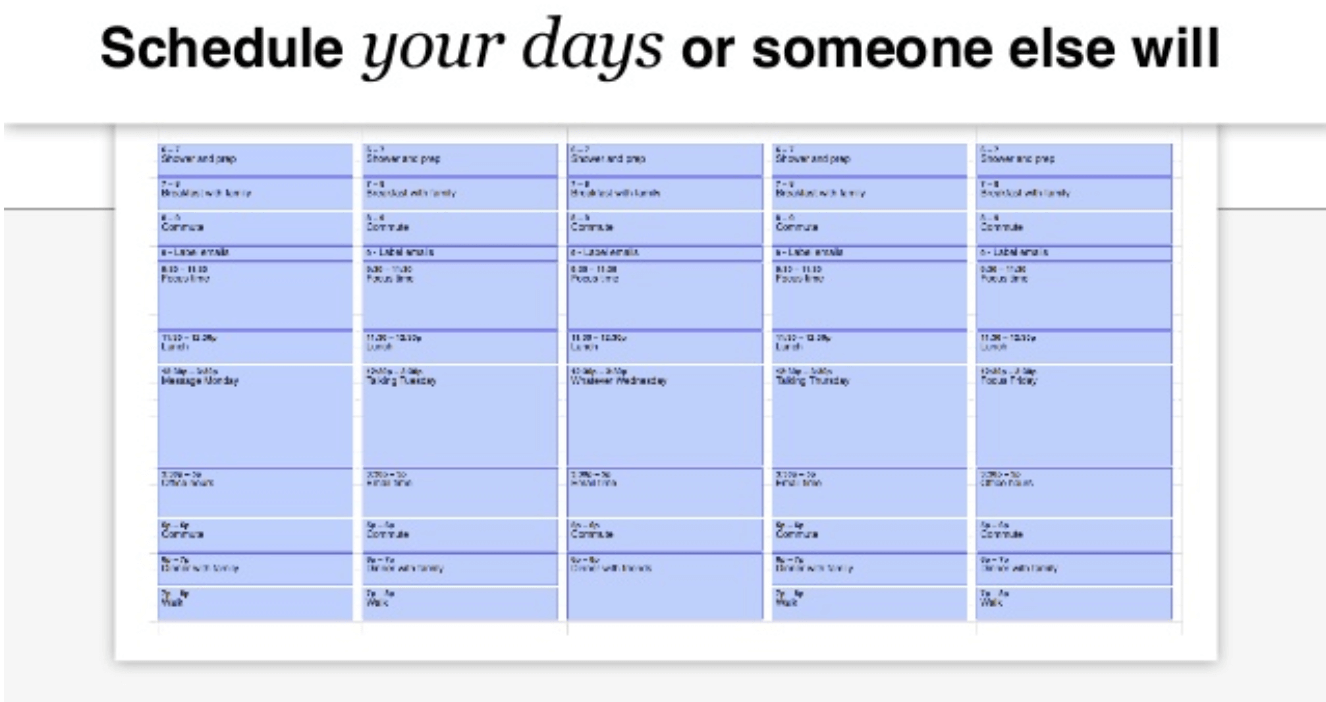
“If you don’t decide what you want to do with your time, somebody is going to decide for you. You can’t call something a distraction unless you know what it’s distracting you from.”
Plan your time, not your output
To gain traction, we need to plan our time, not our output. This is where productivity tools and classic methods like to-do lists fail.
The problem with to-do lists, explains Eyal, is that the majority of tasks on our list get recycled from one day to the next. This makes us feel like losers because we haven’t completed the tasks that we set to achieve for the day.
Instead of trying to finish as many tasks as possible, Eyal recommends a different approach:
“Don’t plan to finish anything. Instead, your goal should be to use a timebox calendar and work on set tasks without distraction for that period of time.”
Plan your input, not output, and you will get things done faster and without guilt.
Spend less time communicating, and prevent others from distracting you
Studies show that when the average American worker eliminates the time they spend on email and meetings, they only have about an hour and 40 minutes to get everything else done. As a result, real works get done after work on nights and weekends.
Also, based on a survey of American knowledge workers, the number one source of external distraction is not technology, as it is widely believed, but other people.
Eyal suggests an easy solution to amend this problem. When we are concentrating on a task, put a “Do Not Disturb” sign on our computer to tell our colleagues that we’re indistractable at the moment.
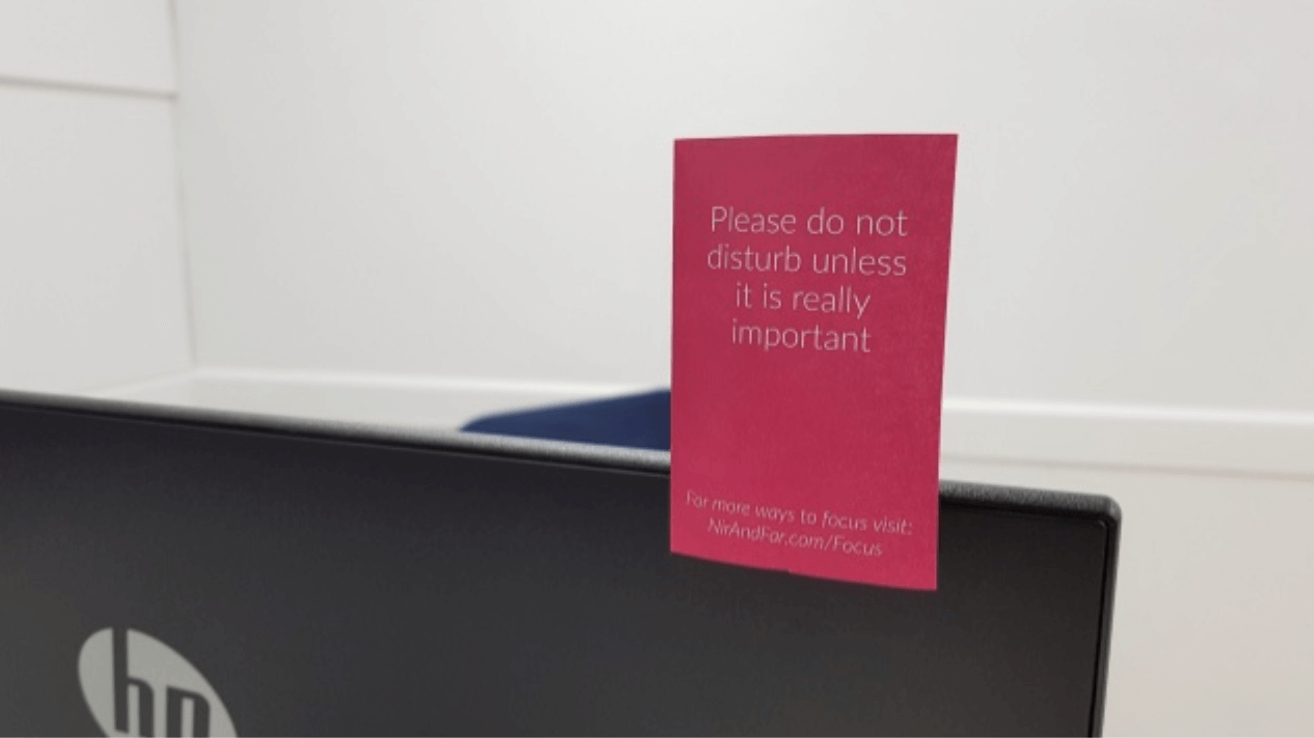
It seems like a simple fix — almost too simple. But, by employing a similar method, a group of UCSF nurses were able to reduce widespread prescription mistakes made in hospitals by a whopping 80%. (Prescription mistakes are one of the leading causes of death in the US, and are proven to be the result of nurses being distracted while administering prescription rounds to hospital patients.)
Their solution? When nurses make their prescription rounds, they now wear a simple vest that says, “Do not disturb. Drug round in progress.”

An incredible result from a no-frills idea, and something that we can all easily apply to achieve better results day-today.
Turn off your phone notifications
Two-thirds of people who own a smartphone never change their notification settings — something that Eyal considers shocking. He recommends everyone to limit phone notifications — or turn them off entirely — when we are trying to focus.
Because in order to reduce the external triggers that lead us to distraction, we need to ask ourselves, “is the trigger serving me or am I serving the trigger?” With phone notifications that pester us throughout our day, it is often the latter.
Use a failsafe
A failsafe is a pact that helps prevent distraction. When leveraged well it can help you accomplish important tasks without procrastination.
Eyal suggests a few ways to implement a failsafe:
- Use an app like SelfControl or Forest to block out distracting apps and websites that prevent you from accomplishing meaningful tasks and making traction.
- Use Focusmate, a platform that helps you find a virtual buddy to work quietly in tandem and experience the power of human accountability.
- Create a price pact. A price pact is a financial disincentive for getting distracted. For example, if you fail to finish a task or project by a certain time, you need to give someone a pre-agreed upon amount of money.
- Build an identity pact. An identity pact is when we make some kind of pre-commitment around who we are. This then influences our behavior. Derived from the psychology of religion, people are much more likely to do what they say they’re going to do when they associate their identity with it.
. . .
A big thank you to Nir Eyal for dropping by the productboard office and giving such an excellent talk!
To stay in the loop about future events at productboard, follow our events page.
. . .
productboard is a product management system that enables teams to get the right products to market faster. Built on top of the Product Excellence framework, productboard serves as the dedicated system of record for product managers and aligns everyone on the right features to build next. Access a free trial of productboard today.


![The CPO’s Blueprint for Annual Planning: An Opportunity to Drive Change [Part 2]](https://www.productboard.com/wp-content/uploads/2024/11/strategy-blueprint-560x293.png)

